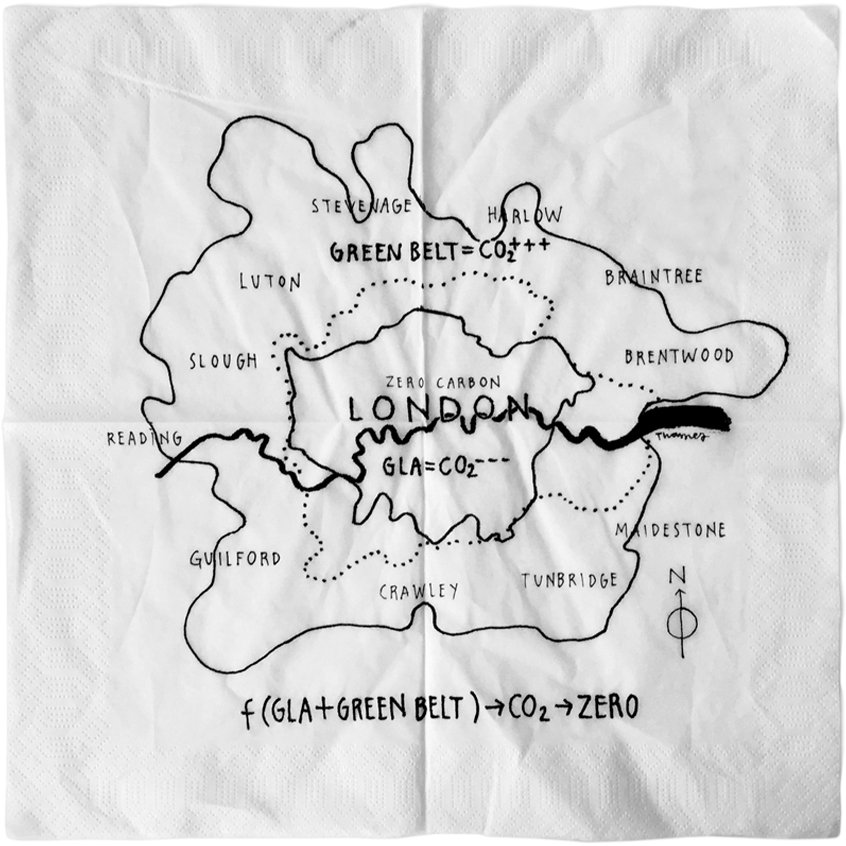
We revisit ‘40 Ideas for London’, a call out for ideas to shape a better London sketched on napkins. Ben Derbyshire, HTA Design, challenges the primary function of the Green Belt and proposes a pleasurable green lung surrounding London’s GLA boundary.
‘There are indeed many good things in life which may be unequally apportioned, and no such serious loss
Octavia Hill, More air for Londonarise ; but the need of quiet, the need of air, and I believe the sight of sky and of things growing, seem human needs, common to all men.’
The Green Belt was first mooted in the nineteenth century by Octavia Hill and owes its implementation to The London Society which published its ‘London of the Future’ under the Editorship of architect Sir Aston Webb in 1921. It proposed “the preservation (and where necessary the clearing) of a continuous Green Belt completely encircling London proper and providing a chain of parks, gardens, playing fields, allotments within reasonable reach of the citizens.”
London’s built footprint should remain contained within the present GLA boundary
But its ‘travel to work area’, within which 75% of the population both live and work (dotted line), extends into the Green Belt. The Green Belt itself has grown from the 2-mile encircling ribbon envisaged by The London Society so that it now extends 35 miles into the countryside around the capital. For London to achieve sustainable well-being for its growing population, and net zero carbon, the area of governance and planning for the capital should take in that part of the Home Counties lying within the Green Belt and a new relationship with nearby satellite towns.
The primary function of the Green Belt should change from a constraint on development to a diverse, pleasurable green lung capable of offsetting the carbon footprint of the capital and providing many of the essential pre-requisites for a resilient future not available within the existing boundary. We need a suite of policies that encourage a massive boost to biodiversity, sources of renewable energy, the conservation of water to replenish aquafers. At the same time, access to the Green Belt by sustainable means needs improvement. Activities within it should be re-focused to encourage a more fruitful relationship between nature and humankind; educational, nourishing, Improving mental health and wellbeing.
Post Covid, we have learned that the towns that fall within the Green Belt can be re-balanced, away from dormitories for commuters to London, to more self-sufficient polycentric clusters, interconnected by improved orbital transport infrastructure, to create a network much more akin to the evenly distributed townships of Netherlands and the Low Countries, only set within the context of beautiful, accessible natural landscape rather than monocultural agri-business. For this vision to be realised we will of course need well researched and evidenced planning, with democratic leadership retained at local level, within an overarching consensus of the populations that will benefit from the change.
The Green Belt has taken more than a century to reach its status as the most popular and successful planning instrument ever. It’s an asset to be enhanced with patience and care. As we ‘Build Back Better’ after Covid 19 let’s embrace it as an essential contributor to a zero-carbon future for London and the constellation of towns that make up its economic hinterland in a new partnership for prosperity and wellbeing.
